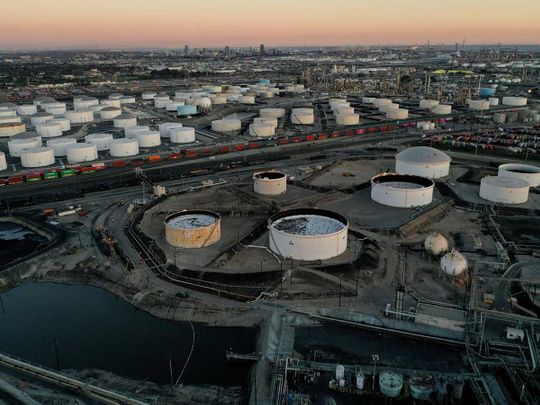
Oil prices settled 1 per cent higher on Thursday, ending lower for the first time this week, as tamer-than-expected U.S. inflation data offset worries that renewed COVID-19 curbs in China would hurt fuel demand.
After three days of declines, crude futures rallied after the inflation data supported investor hopes that the Federal Reserve would temper its interest rate hikes, which could support oil demand.
"(Consumer Price Index data) could be the turning point investors have craved," said Craig Erlam, senior market analyst at OANDA.
"There's still plenty of pain ahead but things suddenly look ever-so-slightly more positive," Erlam said.
Brent crude settled 1.1 per cent higher at $93.67, a $1.02 gain. U.S. West Texas Intermediate crude rose 0.8 per cent to settle at $84.67, or 64 cents higher.
The U.S. dollar index also slid over 2 per cent, as the sunny economic data lured investors away from the safe-haven greenback towards riskier assets including oil. A weakening dollar makes greenback-denominated oil less expensive for other currency holders.
However, China is battling a rebound in COVID-19 infections in several economically vital cities, including Beijing.
Concerns on additional mobility restrictions are keeping a lid on crude price gains, said Giovanni Staunovo, commodity analyst at UBS.
In the manufacturing hub of Guangzhou, millions of residents were told to get tested on Wednesday.
Russia's withdrawal of troops from Kherson in Ukraine also held price gains in check, said Matt Smith, analyst at Kpler.
Crude surged earlier this year as Russia's invasion of Ukraine raised concerns about supply, with Brent coming close to its record high of $147 a barrel. Prices have since fallen on concerns of a possible recession. Brent has dropped more than 6 per cent this week.
The market also came under pressure on Wednesday from a big rise in U.S. crude inventories, up by 3.9 million barrels to their highest level since July 2021.






